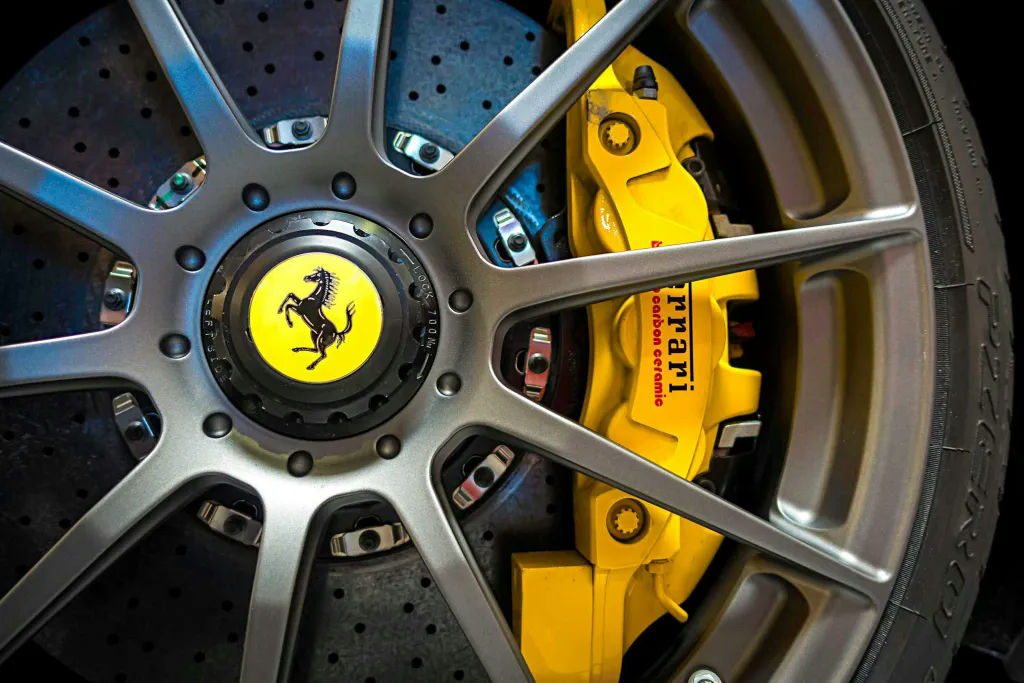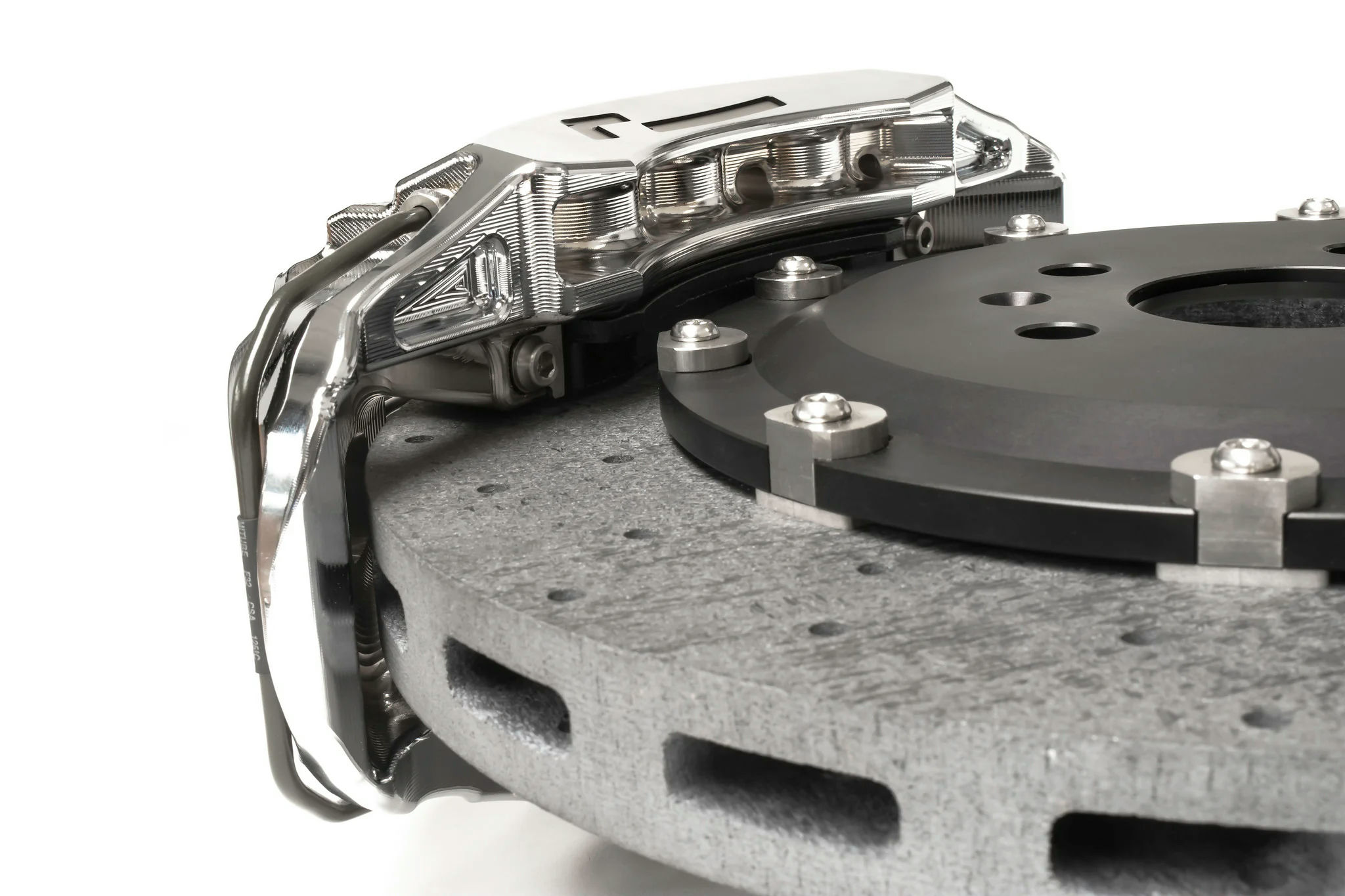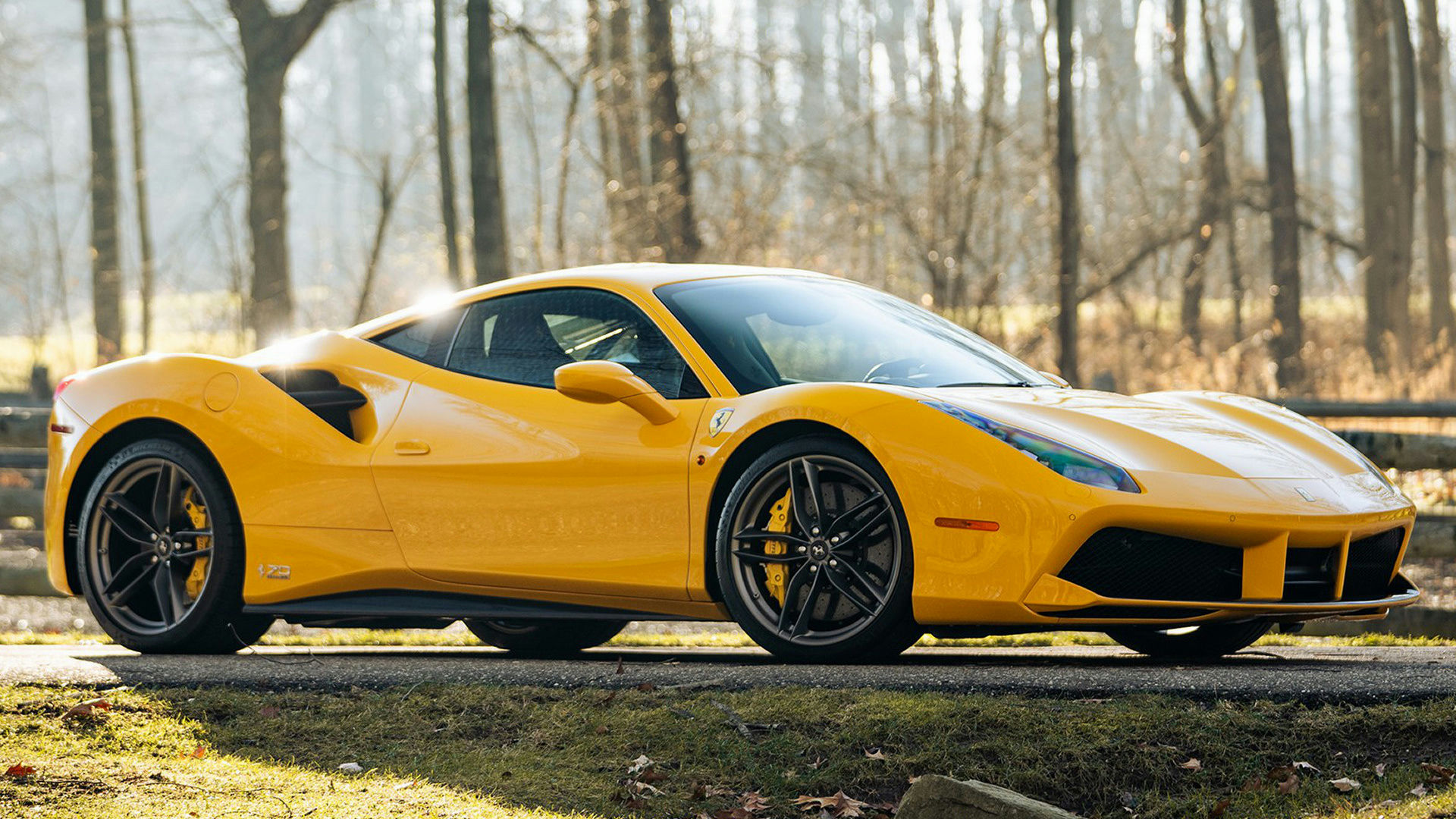
The Evolution and Utility of Carbon Ceramic Brakes
The history of carbon ceramic brakes traces back to the aerospace industry in the late 20th century, where these advanced materials were first developed for high-stress environments. As car performance demands soared, the automotive industry adopted this technology to replace traditional braking systems. Carbon ceramic brakes are prized for their lightweight and superior heat resistance, which improve vehicle performance and safety. The brakes function by utilizing carbon fiber reinforced with silicon carbide, creating a rotor and pad combination that can withstand extreme temperatures and wear less over time compared to conventional steel brakes. This leads to enhanced braking efficiency and longevity, although they come at a higher cost.

Enhanced Braking Performance
Carbon ceramic brakes provide superior stopping power compared to traditional steel brakes. This is due to their ability to operate effectively at much higher temperatures without losing performance. Whether you're on a track or driving aggressively on the streets, you'll notice more immediate and consistent braking. This makes a big difference in high-speed scenarios where every second counts. However, this level of performance may not be necessary for everyday driving.
Reduced Brake Fade
Brake fade occurs when the braking system overheats, reducing its effectiveness. Carbon ceramic brakes excel at maintaining performance even under extreme conditions, such as repeated hard braking. This characteristic is especially important for drivers who frequently participate in track days or spirited drives in mountainous areas. On the flip side, unless you're in such conditions, the benefits might not outweigh the costs. Still, having less brake fade is always a good thing for peace of mind.
Longevity
Carbon ceramic brake discs typically last much longer than traditional steel discs. This is because they are more resistant to wear and tear from heat and friction. Over the long term, this can mean fewer replacements and less maintenance, which can save you time and money. However, the initial cost of carbon ceramic brakes is substantially higher. But if you drive a lot or keep your car for many years, the longevity can be a significant benefit.
Lighter Weight
Carbon ceramic brake components are significantly lighter than their steel counterparts. This reduction in unsprung weight improves vehicle handling, responsiveness, and fuel efficiency. For performance-oriented drivers, this can translate into a more agile and enjoyable driving experience. On the other hand, if you're driving a daily commuter or family car, the benefits might be less noticeable. Nonetheless, every bit of weight reduction can contribute to overall vehicle performance.
Corrosion Resistance
Unlike steel brakes, carbon ceramic brakes are highly resistant to rust and corrosion. This is a significant advantage if you live in areas with harsh weather conditions or where roads are frequently salted. Corrosion resistance means less maintenance and a longer lifespan for your brake components. However, in milder climates, this may not be a primary concern. Still, it's nice to have components that won't corrode over time regardless of environmental factors.
Low Dust Production
Carbon ceramic brakes produce significantly less brake dust compared to traditional brakes. Brake dust can accumulate on wheels and other components, leading to a dirty appearance and potential long-term damage. With less dust, your car stays cleaner for longer periods, and your wheels look better. However, the cost savings in cleaning might not justify the higher initial investment for everyone. It's a small but noteworthy advantage for those who value appearance and maintenance.
High Temperature Tolerance
Carbon ceramic brakes can withstand extremely high temperatures without degrading. This means consistent performance in very demanding conditions, such as spirited driving or descending steep inclines. While not everyone will push their brakes to such extremes, having brakes that tolerate high heat can be reassuring. Still, for regular city driving, this might be more of a luxury than a necessity. It's about having confidence in your braking system, no matter the scenario.
Noise Reduction
Carbon ceramic brakes generally produce less noise compared to traditional metal brakes. This results in a quieter driving experience, which can be more enjoyable, especially for luxury car owners. The reduced noise also means less vibration, which can contribute to overall vehicle comfort. However, not all drivers might notice or prioritize this benefit. Still, having a quieter ride is always a pleasant perk.
High Initial Cost
Carbon ceramic brakes usually come with a high price tag. They can significantly increase the upfront cost of a vehicle, making it a less economical choice for budget-conscious buyers. While they offer advanced performance benefits, the initial investment can be prohibitive for many drivers.
Expensive to Replace
The cost of replacing worn or damaged carbon ceramic brake discs can be quite steep. Unlike traditional steel brakes, which are more affordable and easier to source, carbon ceramic replacements can be a major financial burden. This higher replacement cost might outweigh the benefits for some drivers.
Limited Effectiveness When Cold
Carbon ceramic brakes are less effective when they are cold. They require a higher temperature to function optimally, which means their performance may suffer during short trips or in colder climates. This can be inconvenient for drivers who frequently encounter these conditions.
Potential for Noise
These high-performance brakes can sometimes be noisier than their steel counterparts. Drivers might experience squealing or grinding noises, which can be irritating during daily commutes. While this may not affect performance, it's a point of discomfort for some.
Brittleness
Carbon ceramic brakes can be more brittle compared to steel brakes. They are more susceptible to damage from physical impact or debris. This brittleness can lead to potential issues if you frequently drive in areas with poor road conditions.
Specialized Maintenance
Maintaining carbon ceramic brakes often requires specialized knowledge and tools. Not all mechanics are equipped or trained to handle these advanced braking systems. This specialization can result in higher maintenance costs and limited service options.
Carbon ceramic brakes boast high performance and longevity but come with a host of considerations. From their cost and replacement challenges to sometimes noisy operation and brittleness, these brakes require mindful decision-making. Specialized maintenance further complicates their ownership. Considering these pros and cons is crucial for potential buyers.

Carbon ceramic brakes, while commonly associated with high-performance driving, have found their way into a variety of vehicles from track-minded supercars to high-end luxury sedans. To get a sense of their application, let's delve into some real-world examples.
Ferrari 488 GTB
First up, the Ferrari 488 GTB is an outstanding instance of carbon ceramic brakes in action. This car is designed with speed and agility in mind. Ferrari chose carbon ceramic brakes not only for their exceptional fade resistance during high-speed driving but also for their ability to shave off precious pounds from the car’s overall weight. These brakes provide the stopping power necessary for the 488 GTB's powerful engine and also contribute to its balance and handling.
Porsche 911 Turbo S
Similarly, the Porsche 911 Turbo S is another car that utilizes carbon ceramic brakes. Porsche's implementation isn't just about performance; it's also about consistency and longevity. The carbon ceramic rotors on the 911 Turbo S can handle repeated, heavy braking without losing effectiveness, which is crucial for owners who take their cars to the track often or enjoy spirited driving on winding roads.
Audi R8
Then there's the Audi R8, which also employs these high-tech brakes. Audi's commitment to producing a supercar that's as user-friendly on the track as it is on the street is evident here. The R8 takes full advantage of the superior thermal properties and longevity that carbon ceramic brakes offer, ensuring that they provide reliable performance lap after lap, as well as during everyday driving.
Lamborghini Aventador
The Lamborghini Aventador, a powerhouse of a supercar, also comes equipped with carbon ceramic brakes. Given the Aventador's massive power output, superior brakes are a necessity rather than a luxury. Lamborghini leverages carbon ceramic technology to provide the stopping power required to safely handle the beast's top speeds and rapid acceleration, maintaining control and safety at all times.
McLaren P1
In the more exclusive segment, you have the McLaren P1. A hybrid hypercar like the P1 pushes the boundaries of automotive technology, and it requires brakes that can keep up. With its combination of electric and gasoline power, the P1 can reach mind-boggling speeds, necessitating brakes that not only stop it quickly but do so without degradation in performance. Carbon ceramic brakes fit that bill perfectly.
Bentley Continental GT
Not just reserved for supercars, carbon ceramic brakes are also featured in luxury vehicles like the Bentley Continental GT. In this application, the focus might be less on outright lap times and more on providing a sense of security and refinement. The Continental GT benefits from the brakes' durability and smooth operation, adding to the overall sense of luxury and engineering excellence.
BMW M5
Lastly, consider the BMW M5, a high-performance sedan that strikes a balance between daily drivability and track-ready performance. The optional carbon ceramic brakes in the M5 provide everyday usability with the added benefit of excellent performance during spirited drives or track days. Their resilience to wear and thermal stability means that they maintain consistent performance over time.
So, whether it's a roaring supercar, a high-performance hybrid, or a luxury grand tourer, carbon ceramic brakes have found a wide array of applications. They offer high performance and longevity, making them a versatile choice for various automotive needs.
That's just over the last decade according to the night Franks Luxury Investment Index, making it the best-performing asset class of any other type of collectible. MyGarage.AI was developed to take your car collection and preservation the extra mile with a growing list of innovative features.
Utilize cutting-edge AI to discover fascinating facts about your car and compose engaging, descriptive narratives that highlight its unique story.

Access vast datasets to populate your car’s specifications, title history, and more, ensuring your records are detailed and accurate.

Document key aspects of your car’s history, maintenance, restoration, customization, and performance. Preserve every detail that makes your car special.

Store photos, videos, and records of awards or special recognition, creating a rich, visual history of your vehicle.

Join group forums and participate in event postings to connect with fellow car enthusiasts and build a supportive community.

Enjoy complete control over your privacy and sharing settings. Share your car’s legacy through a searchable gallery or on social media platforms with ease.

Our mobile-friendly platform makes it easy to document and share your car’s legacy anytime, anywhere.

Discover, preserve, and share the legacy of your precious automotive assets to increase their appeal and value.